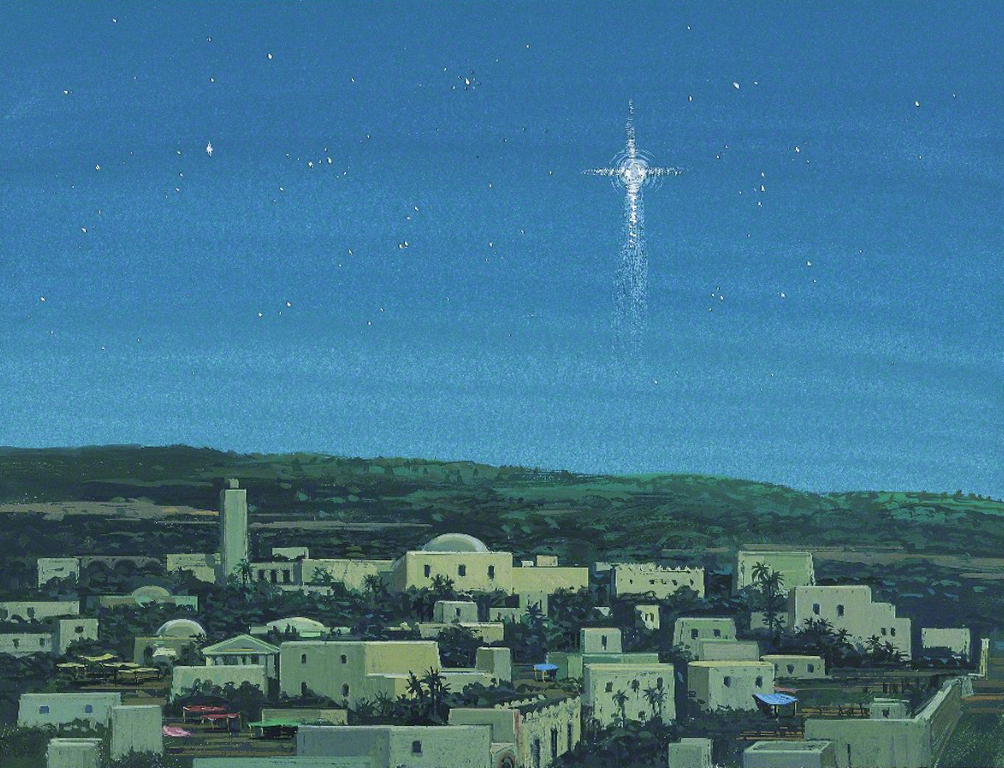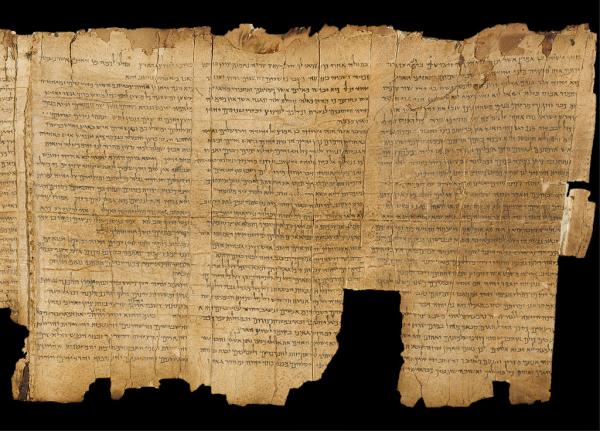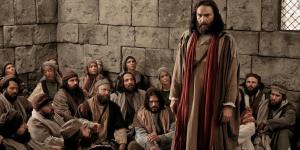You are here
Why Does the Book of Mormon Talk about a “Land of Jerusalem”?

1 Nephi 3:9
The Know
The Book of Mormon and the Bible are both ancient records which testify of Jesus Christ, but there are naturally both differences and similarities between these two sacred histories. Studying some of the differences, even when they are minor or subtle, can be interesting and insightful, and sometimes even testimony building.
Take, for example, the phrase “land of Jerusalem,” which shows up about 40 times in the Book of Mormon, nearly half appearing in 1 and 2 Nephi.1 Yet in the Bible, Jerusalem is never portrayed as a land, only a city. This fact actually drew some criticism in Joseph Smith’s day. In 1838, an anti-Mormon writer insisted, “There is no such land. No part of Palestine bears the name Jerusalem, except the city itself.”2
Today, however, ancient sources have confirmed that Jerusalem was understood as both a city and a land.3 As Hugh Nibley pointed out long ago, several of the Amarna Letters refer to the “land of Jerusalem.”4 These letters represent the correspondence from the rulers of several Canaanite city-states to the Egyptian Pharaoh in the mid-14th century BC, including 6 from ʿAbdi-Ḫeba, the ruler of Jerusalem at the time.5 “Behold,” wrote ʿAbdi-Ḫeba, “the king [of Egypt] has set his name in the land of Jerusalem for ever; so he cannot abandon the lands of Jerusalem!”6
In the Dead Sea Scrolls, a story about Jeremiah talks about captives “from the land of Jerusalem” being escorted to Babylon.7 While the story itself most likely dates to the around the first century BC, it is set in 587 BC in the aftermath of the final Babylonian invasion, and bears some interesting similarities to the opening chapters of the Book of Mormon.8
In addition to this evidence for the expression itself, archaeological evidence indicates that the phrase land of Jerusalem accurately reflects the settlement patterns specific to Lehi’s time. In the seventh century BC, “Jerusalem was located in the centre of a sort of district, which encompassed the capital and its periphery, including the agricultural areas of the city’s residents, as well as satellite settlements directly connected to Jerusalem proper.”9 These satellite settlements would harvest goods which were shipped back to the capital city to meet the needs of its growing population.10
According to Yigal Moyal and Avraham Faust, “One may treat the entire region, including … ‘satellite’ settlements, as part of Jerusalem’s own hinterland.”11 Nephi’s use of the phrase land of Jerusalem may appropriately refer to this “hinterland” surrounding the city itself.
Significantly, these circumstances were unique to the seventh century BC. “Never before in the history of the region,” explained Yuval Gadot, “were there so many sites of different functions and size around Jerusalem.” The reason for this population growth around Jerusalem, according to Gadot, was the devastation of the Judean countryside by the Assyrian army at the end of the 8th century BC. “Jerusalem survived but the Assyrian assault had a devastating impact on the kingdom,” forcing populations to relocate to the regions immediately surrounding Jerusalem.12
Hence, as Robert Eisenman and Michael Wise observed, the expression land of Jerusalem in the Dead Sea Scrolls’ story about Jeremiah, “greatly enhances the sense of historicity” of the narrative, since at this time Judah “consisted of little more than Jerusalem and its immediate environs.”13 Since Jeremiah was Lehi’s contemporary, then logically the phrase land of Jerusalem “greatly enhances” the Book of Mormon’s “sense of historicity” as well.14
The Why
Of course, this subtle difference between biblical and Book of Mormon expressions for Jerusalem is not, by itself, of great eternal worth. Nonetheless, paying careful attention to this small difference provided an opportunity to learn more about the ancient world from which both ancient records come—which, in turn, can help us better understand the scriptural teachings in context. Since the archaeology and ancient sources which corroborate the Book of Mormon only became available recently, this can also build our testimonies in the Book of Mormon as a reliable witness of truth.
Taking the time to patiently investigate other, seemingly more significant differences in the historical, doctrinal, and spiritual truths taught by these two witnesses of Christ can be even more enlightening. Take, for example, Alma’s statement that the Savior “shall be born of Mary, at Jerusalem” (Alma 7:10), instead of Bethlehem, as indicated in the Gospels (see Matthew 2; Luke 2). Some have seen this as a major contradiction between the testimonies of Christ found in the Book of Mormon and the Bible.
Yet Alma’s full statement refers to “Jerusalem which is the land of our forefathers,” indicating that Alma had the land, not the city, of Jerusalem in mind. In one of his letters to Pharaoh, ʿAbdi-Ḫeba mentioned “a town of the land of Jerusalem, Bit-Lahmi by name,” which the late W.F. Albright believed was “an almost certain reference to the town of Bethlehem.”15 Furthermore, a seventh century BC seal impression from Bethlehem was found in Jerusalem, indicating it was one of the “satellite settlements” of Jerusalem’s hinterland, sending its surplus goods to Jerusalem.16
Bethlehem was evidently part of the “land of Jerusalem” in antiquity. Rather than seeing Alma’s statement as a major contradiction with the Bible, careful investigation reveals that it actually represents an accurate understanding of the relationship of Bethlehem to Jerusalem in Lehi’s time.17 Alma likely used the more general reference because his New World audience would not have been as familiar with “regions round about” Jerusalem (2 Nephi 25:1–6).
Thanks to the additional witness of archaeology and other ancient sources, we now know that both the Bible and Book of Mormon bear accurate witness of the Savior’s birth from an ancient perspective.
Further Reading
Neal Rappleye, “Nephite History in Context 2: Special Issue,” Studio et Quoque Fide (December 2017).
Daniel C. Peterson, Matthew Roper, and William J. Hamblin, “On Alma 7:10 and the Birthplace of Jesus Christ” (FARMS Papers, 1995).
Gordon C. Thomasson, “Revisiting the Land of Jerusalem,” in Pressing Forward with the Book of Mormon: The FARMS Updates of the 1990s, ed. John W. Welch and Melvin J. Thorne (Provo, UT: FARMS, 1999), 139–141.
Robert F. Smith, “The Land of Jerusalem: The Place of Jesus’ Birth,” in Reexploring the Book of Mormon: A Decade of New Research, ed. John W. Welch (Salt Lake City and Provo, UT: Deseret Book and FARMS, 1992), 170–172.
- 1. See 1 Nephi, headnote; 1 Nephi 2:11; 3:9–10; 5:6; 7:2, 7; 16:35; 17:14, 20, 22; 18:24; 2 Nephi 1:1, 3, 9, 30; 25:11; Jacob 2:25, 31–32; Omni 1:6; Mosiah 1:11; 2:4; 7:20; 10:12; Alma 3:11; 9:22; 10:3; 22:9; 36:29; Helaman 5:6; 7:7; 8:21; 16:19; 3 Nephi 5:20; 16:1; 20:29; Mormon 3:18–19; and Ether 13:7. Alma 24:1 uses the phrase in reference to a new land called Jerusalem by later Lamanites.
- 2. Origen Bacheler, Mormonism Exposed Internally and Externally (New York, NY: 1838), 14.
- 3. For the most complete discussion of the expression “land of Jerusalem” from an ancient Near Eastern perspective, see Daniel C. Peterson, Matthew Roper, and William J. Hamblin, “On Alma 7:10 and the Birthplace of Jesus Christ” (FARMS Papers, 1995).
- 4. See W. F. Albright, trans., “The Amarna Letters,” in The Ancient Near East: An Anthology of Texts and Pictures, ed. James B. Pritchard (Princeton, NJ: Princeton University Press, 2011), 437–440. For the most relevant excerpts, see Neal Rappleye, “Letters of ʿAbdu-Ḫeba of Jerusalem (EA 285–290),” Nephite History in Context 2 (December 2017): 7. For the most recent edition of the Amarna Letters, see Anson F. Rainey, trans., The El-Amarna Correspondence: A New Edition of the Cuneiform Letters from the Site of El Amarna based on Collations of all Extent Tablets, 2 vols., ed. William Schniedewind and Zipora Cochavi-Rainey (Boston, MA: Brill, 2015). For Hugh Nibley’s work on this, see Hugh Nibley, Lehi in the Desert/The Word of the Jaredites/There Were Jaredites, The Collected Works of Hugh Nibley, Volume 5 (Salt Lake City and Provo, UT: Deseret Book and FARMS, 1988), 6–7; Hugh Nibley, An Approach to the Book of Mormon, The Collected Works of Hugh Nibley, Volume 6 (Salt Lake City and Provo, UT: Deseret Book and FARMS, 1988), 100–102.
- 5. For background on the Amarna Letters, see Richard S. Hess, “Amarna Letters,” in Eerdmans Dictionary of the Bible, ed. David Noel Freedman (Grand Rapids, MI: Wm. B. Eerdmans, 2000), 50–51; Nadav Naʾaman, “Amarna Letters,” in Anchor Bible Dictionary, 6 vols., ed. David Noel Freedman (New York, NY: Double Day, 1992), 1:174–181.
- 6. Albright, “The Amarna Letters,” 438, emphasis added. See also Rainey, El-Amarna Correspondence, 1113: “Look, the king has established his name in the land of Jerusalem forever and he simply cannot abandon it, viz. the city state of Jerusalem.” William L. Moran, ed. and trans., The Amarna Letters (Baltimore, MD: Johns Hopkins University Press, 1992), 328: “As the king has placed his name in Jerusalem forever, he cannot abandon it—the land of Jerusalem.”
- 7. See Kipp Davis, The Cave 4 Apocryphon of Jeremiah and the Qumran Jeremianic Traditions: Prophetic Persona and the Construction of Community Identity (Boston, MA: Brill, 2014), 132, emphasis added. For the relevant excerpt, see Neal Rappleye, “Apocryphon of Jeremiah (4Q385a),” Nephite History in Context 2 (December 2017): 2.
- 8. See Rappleye, “Apocryphon of Jeremiah (4Q385a),” 2–3.
- 9. Nadav Naʾaman, “Josiah and the Kingdom of Judah,” in Good Kings and Bad Kings: The Kingdom of Judah in the Seventh Century BCE, ed. Lester L. Grabbe (New York, NY: T&T Clark, 2005), 198–199. See also Robert F. Smith, “The Land of Jerusalem: The Place of Jesus’ Birth,” in Reexploring the Book of Mormon: A Decade of New Research, ed. John W. Welch (Salt Lake City and Provo, UT: Deseret Book and FARMS, 1992), 170–172.
- 10. Yigal Moyal and Avraham Faust, “Jerusalem’s Hinterland in the Eighth-Seventh Centuries BCE: Towns, Villages, Farmsteads, and Royal Estates,” Palestine Exploration Quarterly 147, no. 4 (2015): 284: “Those farmsteads, along with the other rural settlements, distributed their agricultural surplus to the nearby towns, and mainly to Jerusalem. The latter, naturally, served as an administrative, social, and religious centre for the entire region.”
- 11. Moyal and Faust, “Jerusalem’s Hinterland,” 284. Jeremiah’s expression “Jerusalem and all its cities” (Jeremiah 34:1 NRSV) seems to reflect this situation.
- 12. Yuval Gadot, “In the Valley of the King: Jerusalem’s Rural Hinterland in the 8th–4th Centuries BCE,” Tel Aviv: Journal of the Institute of Archaeology of Tel Aviv University 42, no. 1 (2015): 17–18.
- 13. Robert Eisenman and Michael Wise, The Dead Sea Scrolls Uncovered: The First Complete Translation and Interpretation of 50 Key Documents withheld for over 35 Years (Rockport, MA: Element, 1992), 57.
- 14. See Gordon C. Thomasson, “Revisiting the Land of Jerusalem,” in Pressing Forward with the Book of Mormon: The FARMS Updates of the 1990s, ed. John W. Welch and Melvin J. Thorne (Provo, UT: FARMS, 1999), 139–141.
- 15. Albright, “Amarna Letters,” 440 n.15. While others have disputed this connection, many biblical scholars still accept the identification. See, for example, Markus Bockmuehl, This Jesus: Martyr, Lord, Messiah (New York, NY: T&T Clark, 2004), 25; Eugen J. Pentiuc, Jesus the Messiah in the Hebrew Bible (New York/Mahwah, NJ: Paulist Press, 2006), 137 n.67; Denis Baly, “Bethlehem,” in HarperCollins Bible Dictionary, rev. and updated, ed. Mark Allen Powell (New York, NY: HarperOne, 2011), 92; Jerome Murphy-O’Connor, Keys to Jerusalem: Collected Essays (New York, NY: Oxford University Press, 2012), 5.
- 16. See Ronny Reich, “A Fiscal Bulla from the City of David,” Israel Exploration Journal 62, no. 2 (2012): 200–205; Martin Heide, “Some Notes on the Epigraphical Features of the Phoenician and Hebrew Fiscal Bullae,” in Recording New Epigraphic Evidence: Essays in Honor of Robert Deutsch on the Occasion of his 65th Birthday, ed. Meir Lubetski and Edith Lubetski (Jerusalem: Leshon Limudim, 2015), 72. See also Neal Rappleye, “Bethlehem Bulla,” Nephite History in Context 2 (December 2017): 14–17.
- 17. See Neal Rappleye, “Why Did Alma Say Christ Would Be Born in Jerusalem? Surprising Evidence of the Book of Mormon,” LDS Living, December 21, 2017, online at ldsliving.org.
KnoWhy Citation
Related KnoWhys
Subscribe
Get the latest updates on Book of Mormon topics and research for free






